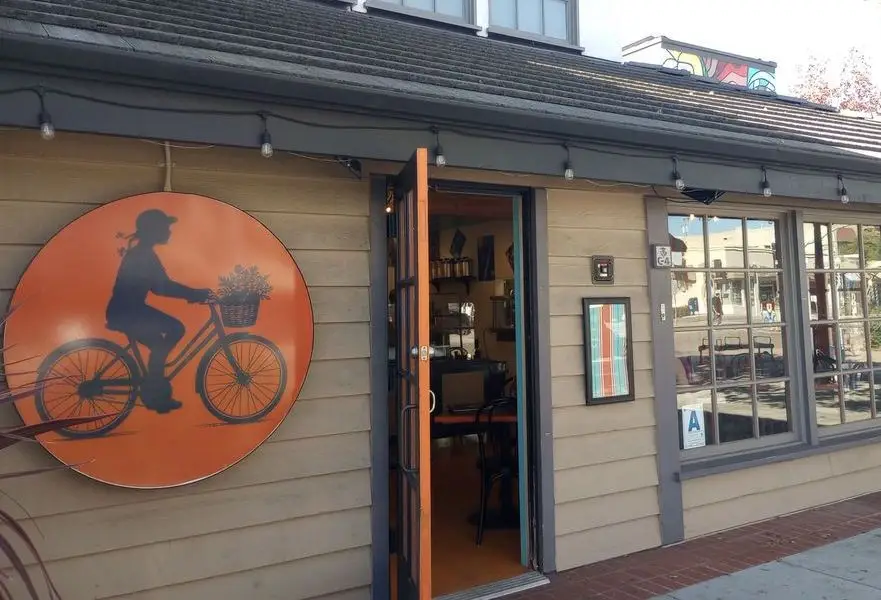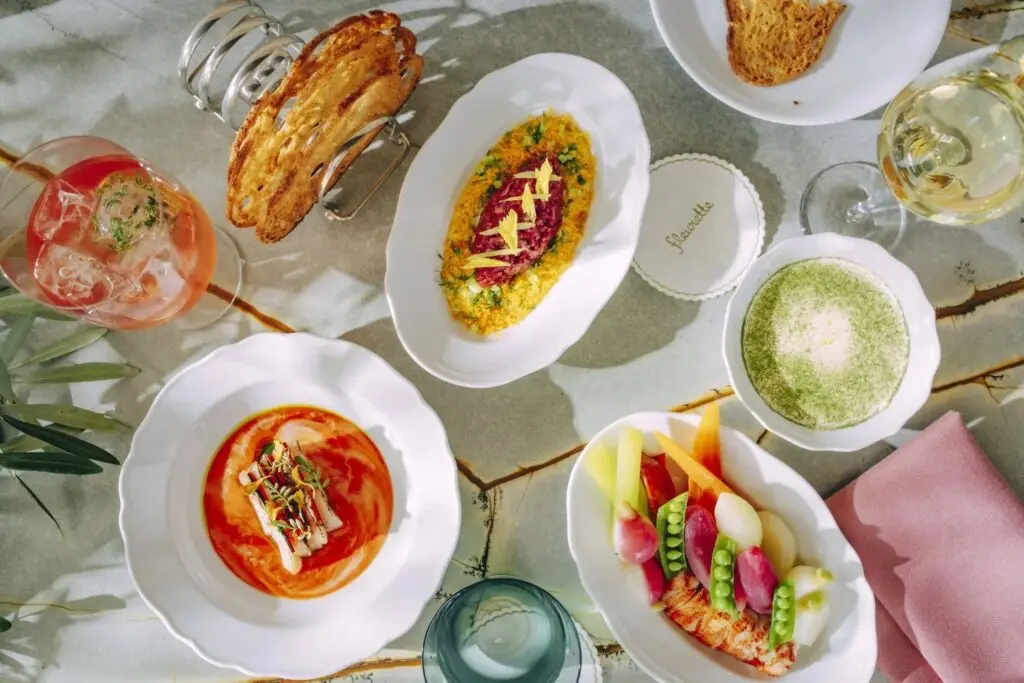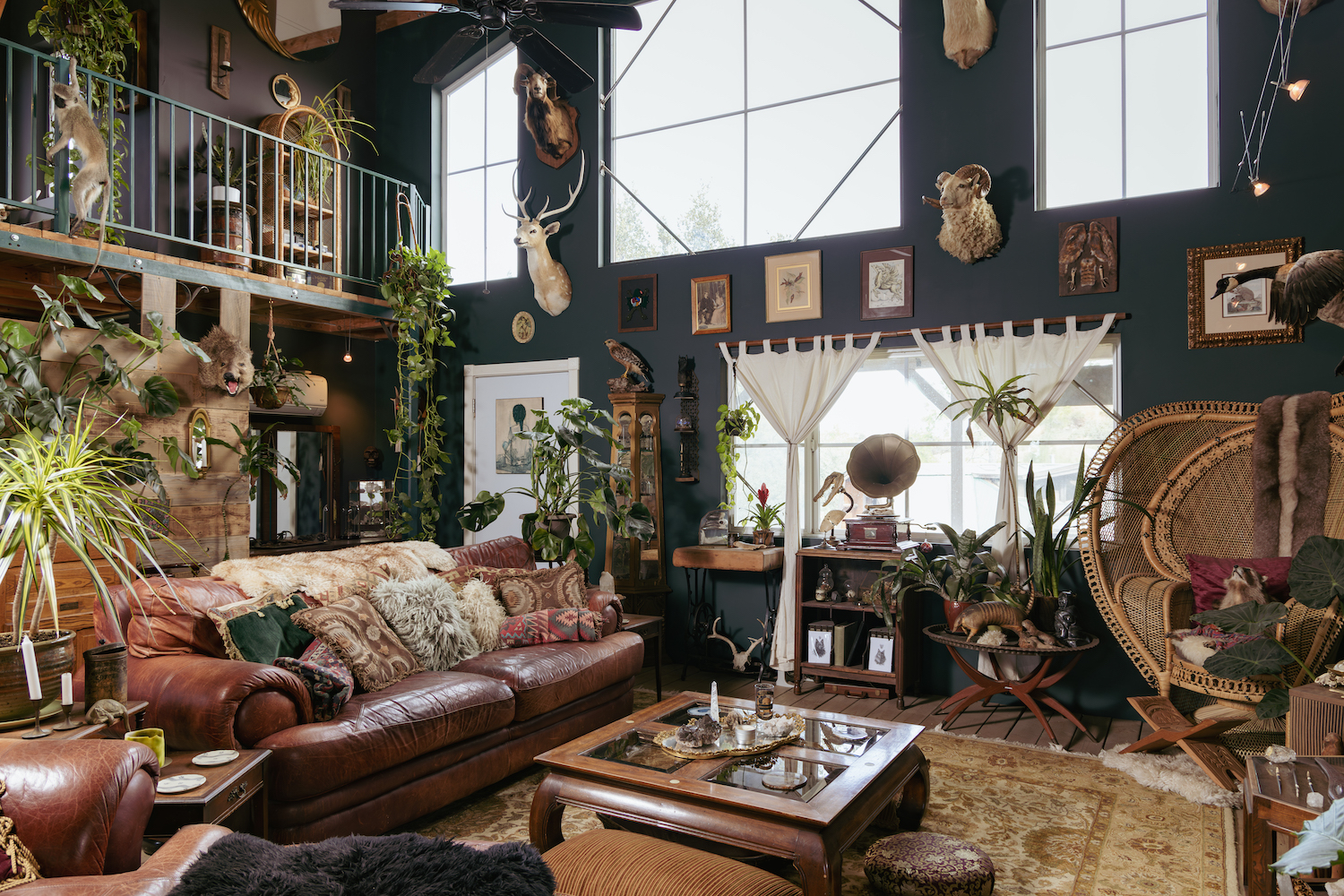Racoons in cowboy hats play poker while tiny, bikini-clad alligators and two-headed baby ducks look on. In the corner, a scurry of squirrels smokes cigarettes while rats turn on stripper poles. Everywhere, something strange.
No, you didn’t accidentally hit the DMT pen instead of your usual vape. You’re fine. You may have simply wandered into The Gold Dust Collective oddities shop in North Park.
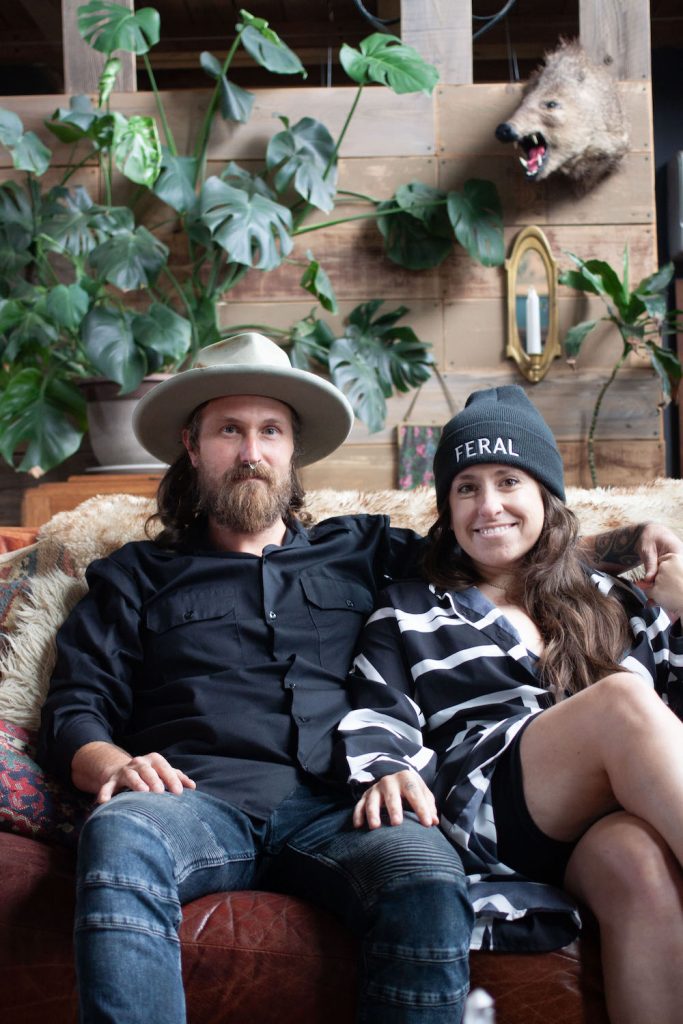
Gold Dust is a curiosity hunter’s dream, full of bizarro taxidermy, charms, potions, local art, jewelry, and funky secondhand scores. For fans of the freakish, the store holds down a niche corner of San Diego décor. When you’re in the market for half-stuffed roadkill dressed in doll clothes or an old jug for holding mercury, this is your place. Curated with the care of an art gallery, Gold Dust is more than a place for strange gifts. It’s an ode to the macabre and a middle finger to the mundane.
So it’s no surprise that Gold Dust owners Kate Conner and Damien Ducommun have brought the same spirit to their home in Jamul.
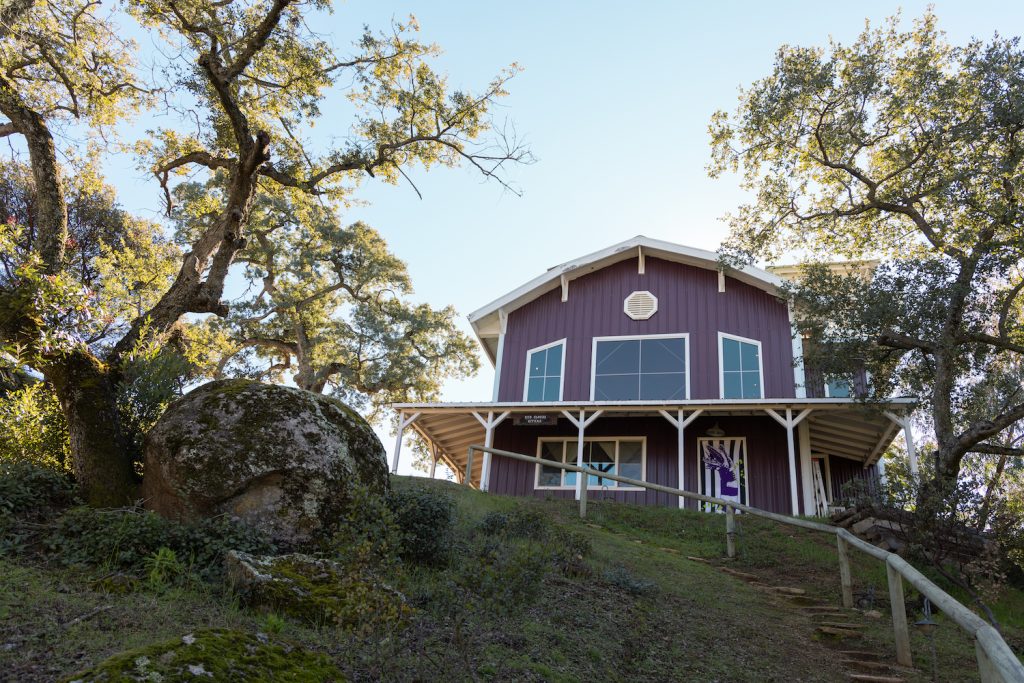
Sitting on more than 8.5 acres of prime rattlesnake and coyote country, their property boasts two houses, an art studio, a freestanding garage, and a large, dusty pen where their tortoise, Earl, eats his salads. The main house is shockingly approachable. Built in 1978, the 2,200-square-foot three-bed, two-bath would look the part in Tahoe or Big Bear with its wood-paneled walls and high, paneled ceilings. Light pours in from large windows showcasing shrubland punctuated by large granite boulders.
A big wraparound deck separates the house from an earth-brick studio with weathered, swinging wooden doors and a terracotta roof. Inside, Ducommun handcrafts stylish western hats under the label Haberdash Hat Co., selling them at Gold Dust and by commission.
“The bricks were all made here from dirt onsite,” Ducommun says of his workshop. “The woman who lived here before us, this was her original art studio.”

Ducommun does more than hats. Many items for sale at Gold Dust have passed through his hands. He rescues dilapidated taxidermy, and his studio is littered with various animals in need of repair. He shows me a stuffed white mouse that he plans on dressing in western wear and mounting on a half-coiled rattlesnake—saddle and all—like a snapshot from a surrealist rodeo.
But it’s up the hill where things get really interesting. The 1,000-square-foot guest house, shaped like a barn and painted dark red, is where the couple spends most of their time. It’s where they sleep and where their true colors shine. Walking in is like stepping into a private oddities expo.
“I call it moody maximalism,” Conner says.
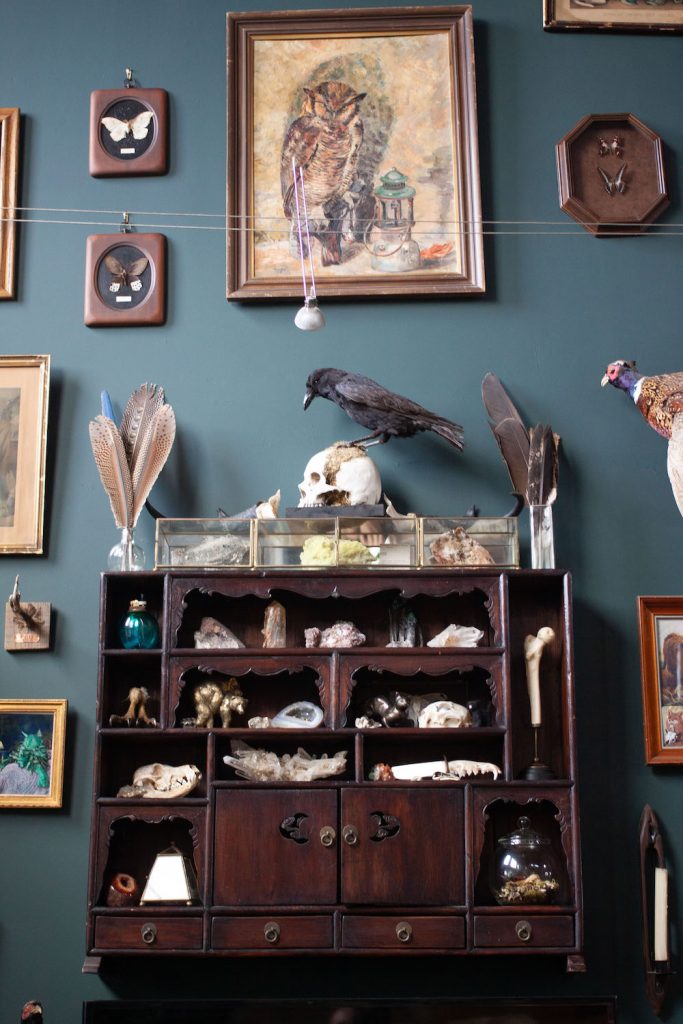
Maximalism might be an understatement. A javelina, a bighorn sheep, a Canadian goose, a raven, an axis deer, an antelope, an armadillo, weasels, raccoons, snakes, a fox in a top hat. Bones from one of their late cats lie reverently in a glass box. The bones of a full human finger dangle delicately from a mount. A foot from a pet chicken killed by a coyote is mounted on the wall, permanently flipping the bird. Maybe it’s the big plants giving all this dead stuff life, but somehow, it doesn’t feel overwhelming. It feels like hanging out in a museum, every item carrying a story.
“I think my favorite taxidermy piece by far is the peacock,” Conner says, pointing to the open bedroom loft above.
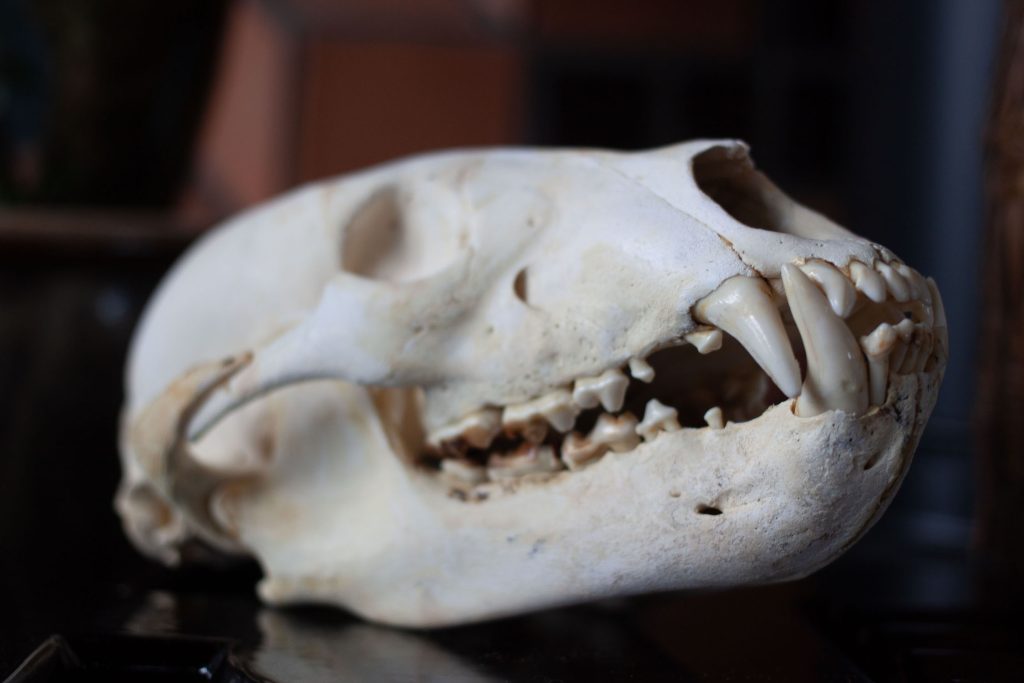
“Yeah, when we got it, it was on a really kind of janky mount,” Ducommun explains. “I found this really cool old lamp that was missing all the components. So I just did a little tweaking.”
Conner loves the history of these objects— and the challenge of finding them.
“She’s the queen of winning online auctions and hunting stuff down,” Ducommun says. “That’s a full-time job in itself, knowing what it’s worth, what the market is.”
“Something that I pride myself on a lot is that nothing in here we’ve paid even close to retail for,” Conner adds. “My favorite hobby is the hunt.”
I appreciate animals, but being around so many quirky stuffed ones doesn’t fill me with life, as it seems to do for Conner and Ducommun. To better understand the allure, I called Michelle Cozzaglio in Tulsa, Oklahoma. Her traveling collector market, the Oddities and Curiosities Expo, stops annually in SD.
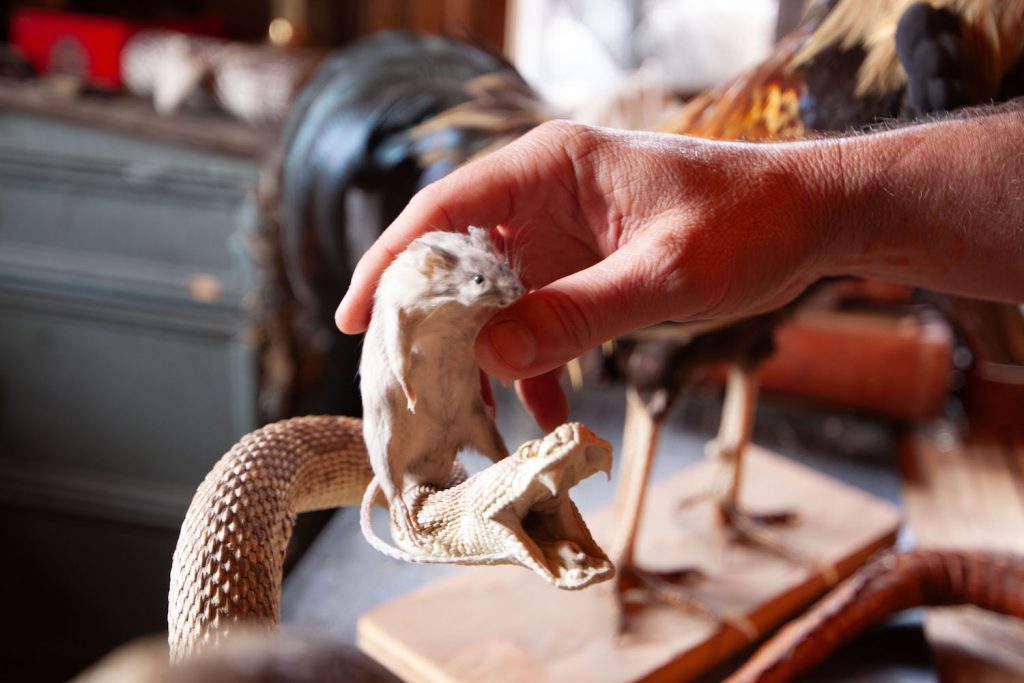
“Taxidermy in the home is a resurgence of that life,” she tells me. “The animal has passed and you’re kind of giving it a second life. That’s why some people are so drawn to it.”
This seems to ring true for Conner and Ducommun.
“We both have the highest respect for animals,” Conner says. “And honestly, nothing breaks our heart more than seeing pieces of taxidermy that are in a state where clearly the next step is the dump. It just seems so disrespectful and sad. So that’s why we like to find pieces and give them a new life and a name, because they deserve it.”
PARTNER CONTENT
However, the couple acknowledges that the vibe isn’t for everybody. Some people are minimalists, after all.
“I’m a more-is-more gal, always,” Conner says.

